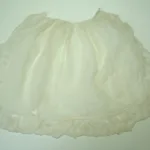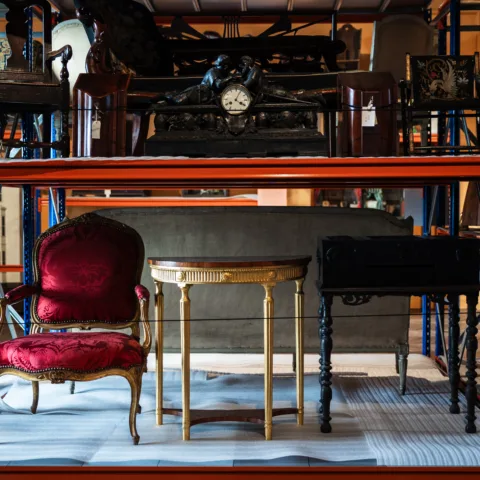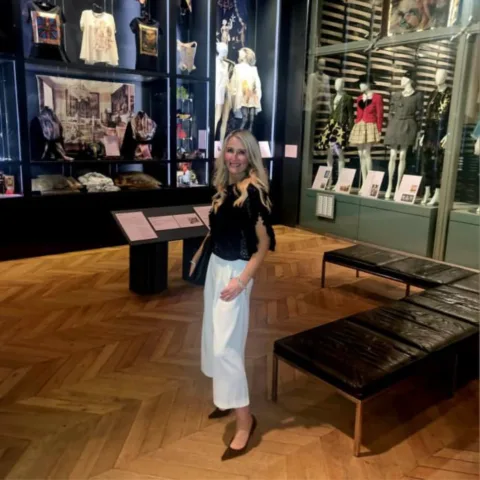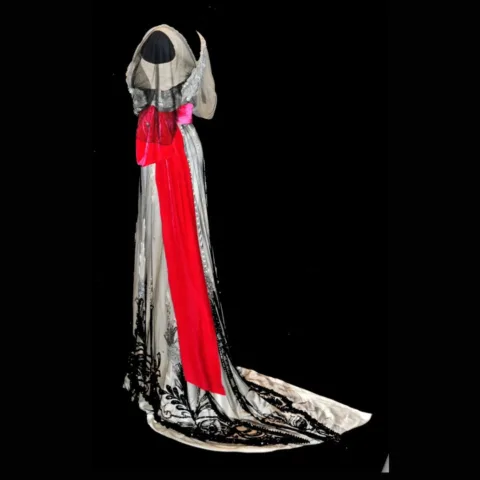The Bowes Museum Blog

Doll Conservation: Underwear
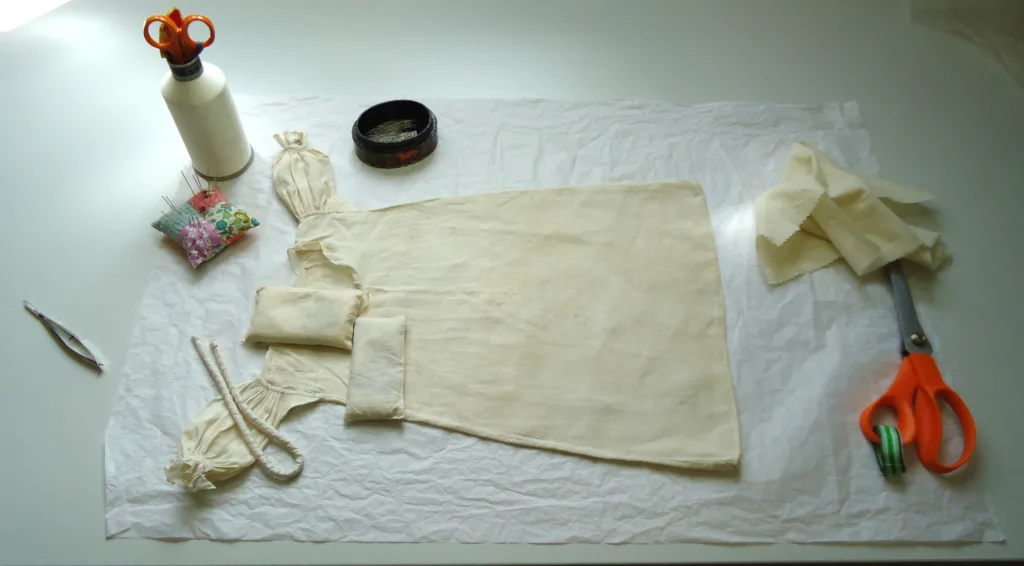
By the very nature of being a textile conservator at a small museum, new projects can land in my lap at very short notice, meaning that even the best laid plans can go to waste. Following a brief hiatus to conserve an altarcloth, decant the entire Fashion & Textiles Gallery, and conserve shoes for display in our current exhibition, work has been well underway in the past week on the 1740s fashion doll [TOY.301]. Regular readers may have already seen that she has been documented and photographed, and her underwear has all been washed. The next step in the process was to complete the conservation of her white undergarments (shift, petticoat and pocket), and her whitework embroidered apron.
Each of these 4 small items of dress were conserved using the most basic of textiles conservation techniques, introducing support fabrics behind areas of damage and deterioration, and securing in place with stitching. Although on a very small scale, these are a good example of the ‘bread and butter’ of textiles conservation, as we’ve shown many times on this blog: selecting an appropriate support fabric, and stitching it in place using appropriate thread. This re-imparts physical strength, takes the strain on vulnerable areas, and visually infills areas of loss.
The benefit of working on doll’s clothes as opposed to their full-scale adult equivalents, is that they’re quick to do. The drawbacks, that they can be incredibly fiddly (this is where the famed ‘patience’ comes into its own). This is also where you’ll see the tiniest of tools: fine surgical needles, even finer polyester threads, insect pins, and, sometimes a pair of optivisors (a magnifying headset).

Silk crepeline support patch – pinned in place with entymological pins
The doll’s apron, featuring whitework embroidery on a lightweight fabric had suffered from many tears and holes, not unexpected given the doll’s age. Using a black background to work against, in this instance a piece of laminated black card, really highlights the damage, and makes the application of a patched support simpler. Silk crepeline was used as a support fabric, which visually blended into the semi-sheer apron. Laid thread couching using a very fine polyester thread and a surgical needle transformed the piece. The top edge was enclosed in conservation-grade nylon net, which held the loose threads in place, and offers a degree of physical protection against future abrasion.

Waist tape of pocket, and strip of net cut to size
The same method was used to enclose the waist tapes of the pocket, which were very abraded from being knotted around the doll’s waist. The fine linen tape had come loose at one corner, so was humidified, re-positioned, and stitched into place.

Pocket – after conservation
The white petticoat with decorative border was in relatively good condition. One small hole at the centre front was patch-repaired using a colour-matched piece of cotton fabric, secured in place with a Gutermann Mara 220 colour-matched thread. As we carry out more dyeing in the studio, we fill our ‘bit-boxes’, with useful scraps for jobs such as this.

Shades of cream cotton
The petticoat is lined, meaning that the conservation patch must be inserted between the two layers. Fortunately for me, much of the stitching had come undone at the waist band. Just enough to insert a piece of Melinex (polyester film) as a separating layer (to prevent stitching through front and back and joining the layers together), and to slide the patch in place. In the image blow, the glass headed pins are holding the Melinex in place (it is very slippy), the red tacking stitches mark the edges of the support patch, and the laid thread couching is visible over and around the small hole. The areas of open seam at the waist were stitched closed using a colour-matched thread.

The patterned border was in pristine condition around the back half of the petticoat, but faded, worn and abraded on the front half. Too small to insert patches behind, the length was encased in a colour-matched net, which visually disappears.

Conservation nylon net pinned in place
Last, but by no means least was the shift. With perfectly colour-matched fabric procurred from the ‘bit-box’, the many holes were conserved as outlined above. A piece of Melinex was again used as a separating layer, with all stitching carried out using Gutermann Scala 360 thread, colour-matched to the object.

Conservation in process – a small underarm tear
The soft bean bag weights shown in the photo are homemade using a tightly woven cotton fabric, and lead curtain weights. These are invaluable, to hold the textile flat, and with the grain aligned, so that nothing can slip or move as I am stitching. All the stitching is carried out flat on the table, using a curved needle.

Cuff band of sleeve, with net pinned in position
The cuff bands on each sleeve were in poor condition, inside and out. They were heavily split, and very minutely stitched in place. Each measured just 5mm in width. The only option was to encase in net, which proved incredibly fiddly, but will serve to hold the textile together, and prevent the frills from becoming detached.
The stitching on these 4 objects took 21 hours in total (that’s 3 day’s work). With all the white undergaments conserved, the doll will have to remain naked for a short while longer. Her body is in need of some conservation, both the textile wrappings of her body and arms, and painted elements of her face. This work is planned for 2 weeks time, there is just the little matter of 30 items of 20th century costume to go out on loan first…..
Katy Smith, Textile Conservator
